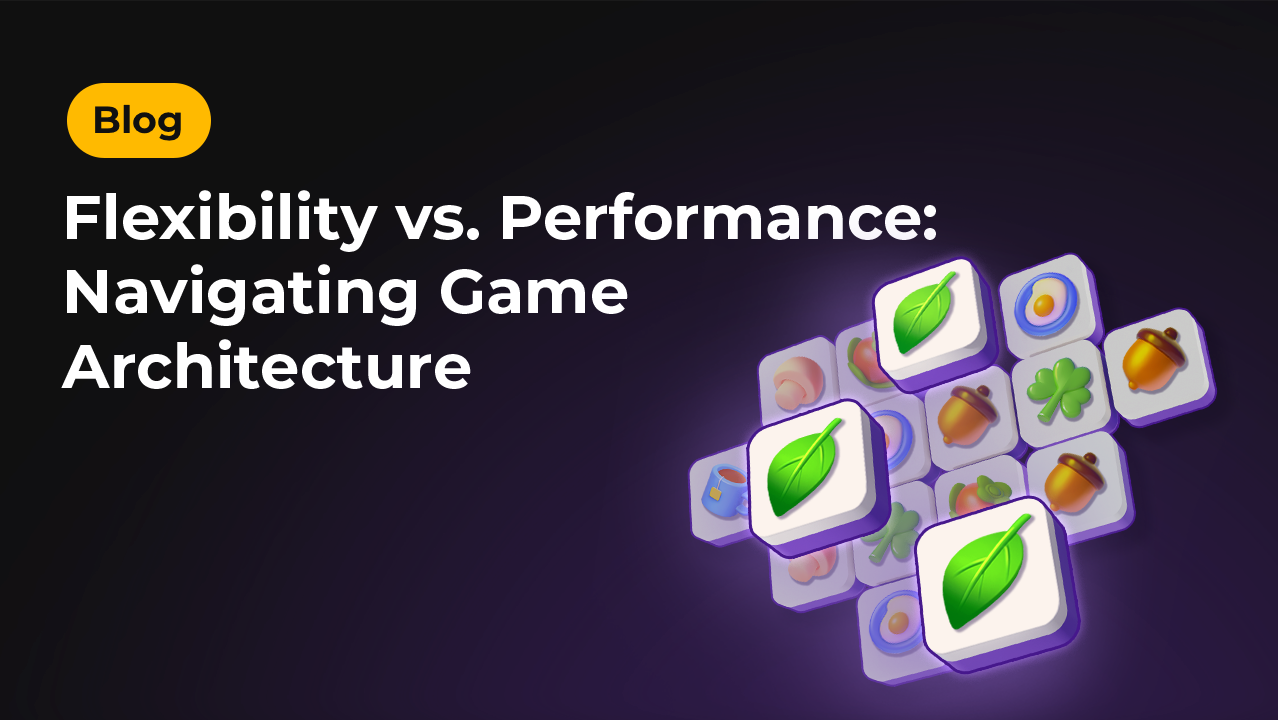Flexibility vs. Performance: Navigating Game Architecture

Today, we present the second part of our Software Architecture research prepared in collaboration with Unity Developer Vladislav Batyshchikov. He has helped us navigate complex concepts and untangle messy ideas to provide helpful advice for you!

In the world of video games, discussions revolve around how game architecture and abstractions can impact its performance. Some believe that complex concepts slow down gameplay. However, the answer to this question is not so straightforward. It’s important to strike a balance between flexibility and performance to achieve optimal results.
In creating high-quality software, it isn’t just necessary to have a working product, but a flexible system that easily adapts to changes. This is achieved by creating interfaces that work with different parts of the program and by utilizing patterns such as DI, SL, and others. These make interaction between different parts of the game easier and allow for easy expansion of its functionality.
However, performance considerations are also important. Code optimization is necessary and depends on specific requirements, such as how many characters will be rendered simultaneously — 1, 2, or 1000. This determines the choice of development approach. Optimizations can reduce overhead associated with the use of architectural abstractions. Creating a balanced game design is a complex task that requires numerous iterations and experiments.
How do you find the right balance in game development? Initially, it’s important to keep the code flexible and easily changeable. As the architecture becomes clearer and areas where performance needs improvement are identified, optimizations can be made, including the use of specific algorithms or data structures, as well as abandoning certain abstractions.
Every project has its own unique requirements and constraints, so developers must carefully analyze their needs and make decisions based on specific circumstances. Designing program architecture and using abstractions require a delicate balance between flexibility and performance. Through the right approach and optimizations, optimal results can be achieved.
Using an iterative development process and conducting experiments will help create a balanced game design. The compromise between flexibility and performance will depend on the requirements of the specific project. Ultimately, developers can always choose the coding style and what will be used in their game, adhering to the principles of “clean” code, but sometimes compromises have to be made in favor of another approach.
How to effectively design games while striking a balance between conflicting tasks
So, what tasks in design contradict each other?
- I’d suggest “The desire for a flexible architecture with code that is understandable and easily maintainable throughout the project
- Maintaining high game performance
- Prototyping requires quick execution
A good architecture typically increases development productivity in the long term, but creating it requires more effort upfront.
Implementing a prototype that needs to be quickly developed is rarely highly efficient: Rapid development can lead to insufficient optimization, which ultimately may negatively impact the game’s performance. This is an important reminder that the balance between development speed and optimization is a compromise that needs to be individually sought for each project.
Optimized code is hard to change: Optimized code often caters to specific cases and may limit flexibility and scalability. It’s important to find a balance between code optimization and flexibility.
Development pressure today postpones optimization for tomorrow: In game development, there’s often pressure to quickly complete tasks. However, delaying optimization can lead to future problems. It’s crucial to find a compromise between immediate tasks and long-term stability and performance.
There’s no one-size-fits-all solution, only compromise: In game development, there’s rarely a single correct path. Developers must seek a compromise between various game features, considering development speed, performance, flexibility, and other factors.
Exploring a vast array of strategies and constraints: Game development is an ongoing learning process, where there are always new constraints and strategies, making the development process interesting and exciting.
Complex games and diverse strategies: Simple games can be dull as they’re often constrained by a single architecture. Complex games with diverse mechanics offer numerous possibilities and strategies, requiring time for exploration.
Conclusion
Here are a few useful tips for game developers:
- Enjoy the development process to create something engaging.
- Use abstractions and reduce code coupling when necessary.
- Pay attention to performance throughout the development cycle.
- Move quickly to explore game mechanics, but not too quickly to avoid chaos in the code.
- If using temporary code, don’t worry about its appearance; focus on functionality.




